Anzac Day minute book added to the Australian Memory of the World Register
By JOL Admin | 5 March 2019
Did you know that the elements of Anzac Day, our national day of remembrance, are believed to have originated from an Anzac Day Commemoration Committee meeting held in Brisbane in 1916? The minute book for this meeting is in the State Library collection and UNESCO has announced that it will be added to the Australian Memory of the World Register.
“ … recognition of the gallant courage displayed by Australia’s sons, in fighting for the preservation of liberty and civilisation.”
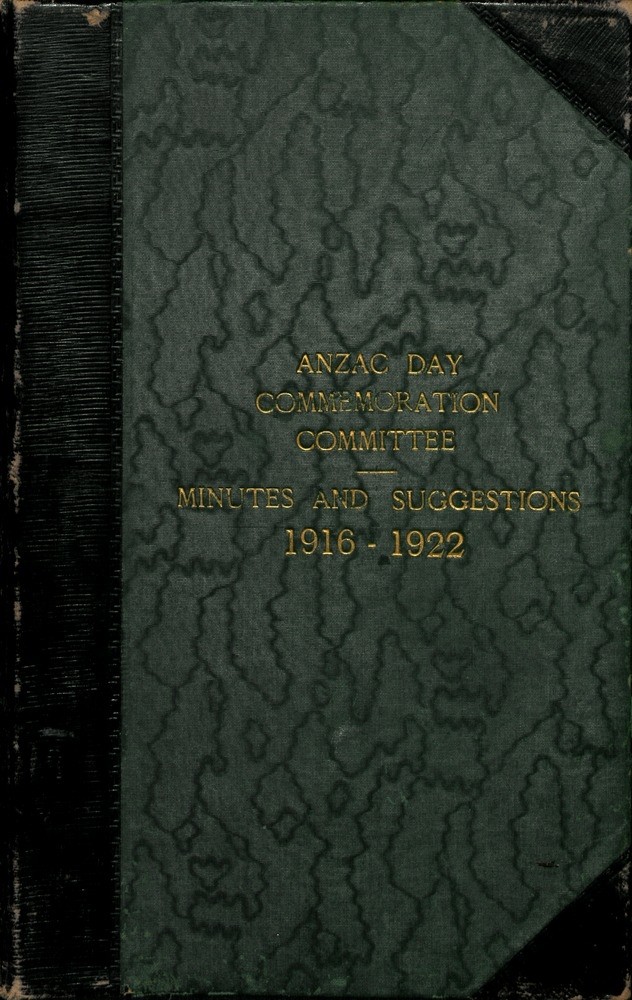
Minutes and Suggestions 1916-1922. OMHA ANZAC Day Commemoration Committee Records 1916-1974, John Oxley Library, State Library of Queensland.
The mottled dark green book is benign enough; a record of meetings held over 100 years ago. But among the smudged and yellowing pages – half typed, half hand-written – lies a plan to honour the many young Queenslanders who served and died at the Dardanelles.
State Library of Queensland holds the records of Queensland's Anzac Day Commemoration Committee, established at a public meeting in the Exhibition Building in Brisbane on 10 January 1916, in order to explore options for the commemoration of the fallen soldiers of the Gallipoli campaign. The first minute book of the Anzac Day Commemoration Committee, held in the John Oxley Library and recently digitised, is a precious piece of our state's wartime history, and suggests that Queensland was the first state to develop a formal structure for observing Anzac Day, and to settle on a date with the hope that others would follow.
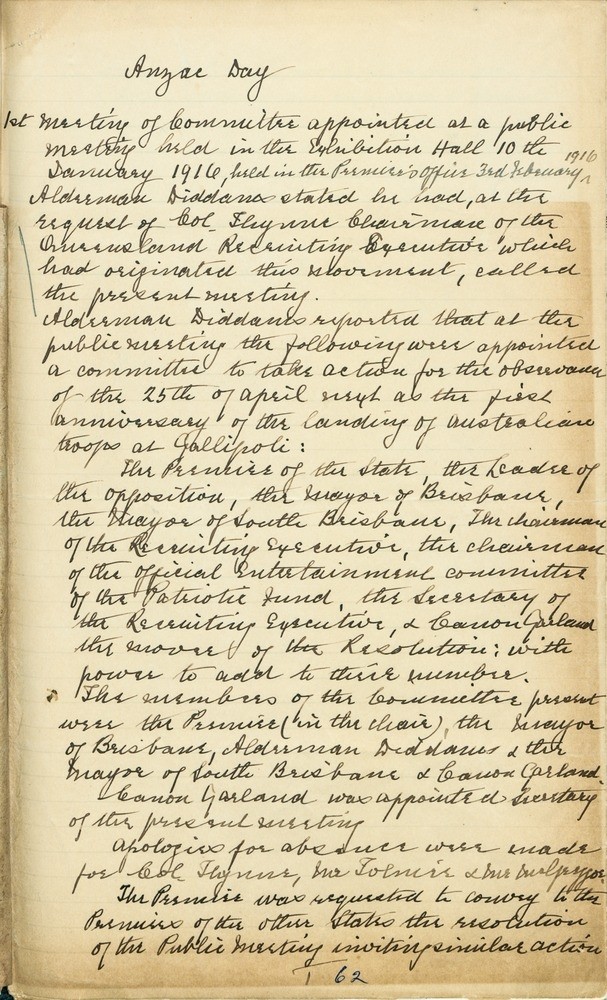
“It will be remembered that on the 11th January (1916) a public meeting was held in Brisbane, presided over by the Mayor of Brisbane (Alderman Down) … when it was decided that the first anniversary of the Landing of Gallipoli shall be suitably celebrated in Queensland, and the other States be invited in similar action,” the book states.
“It was decided that the date to be observed shall be the 25th April, the day of the original landing, and that the chief object of the Day shall be the commemoration of our fallen heroes and for the honour of our fallen heroes.”
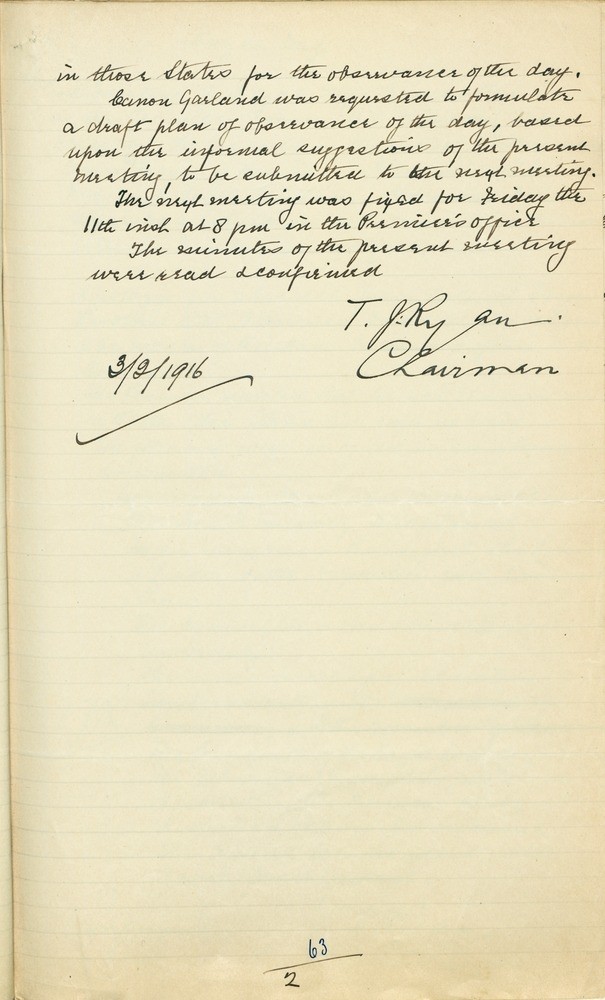
Anglican Canon David John Garland is acknowledged as the main contributor of ideas around how the day should proceed. Religious groups were encouraged to hold services and every Queensland town was to hold a public meeting with “every person and all work come to a standstill for a period of one minute at 9 p.m. in honour of our fallen heroes”. Returned servicemen and those who lost loved ones were assigned a place of honour at these events.
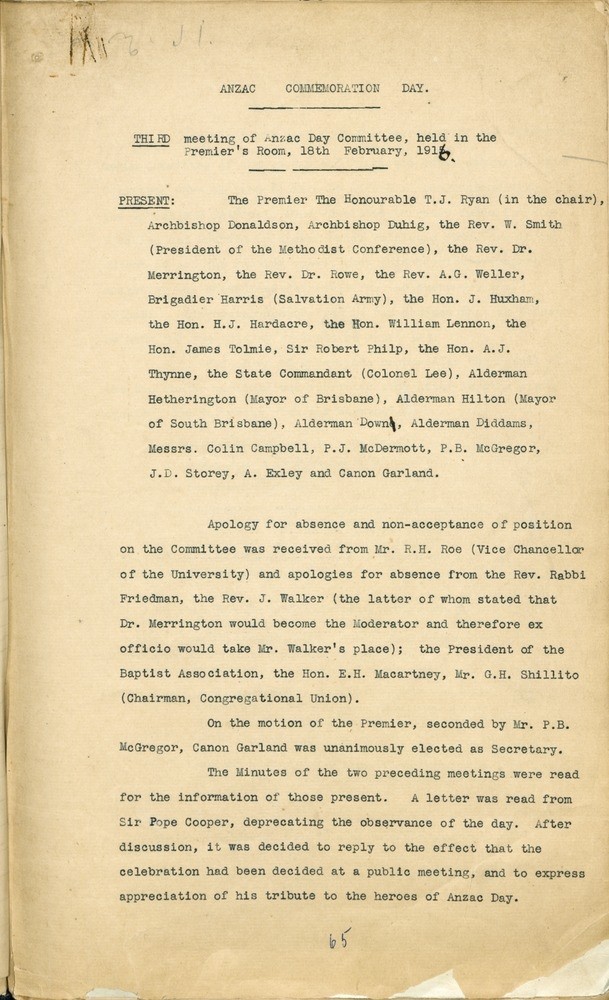
The Camp Commandant (presumably from the Enoggera Camp) was a particularly busy man.
For the Anzac Day service in Brisbane he was slated to arrange church parades in the morning as well organising all the accommodation for the church groups in attendance.
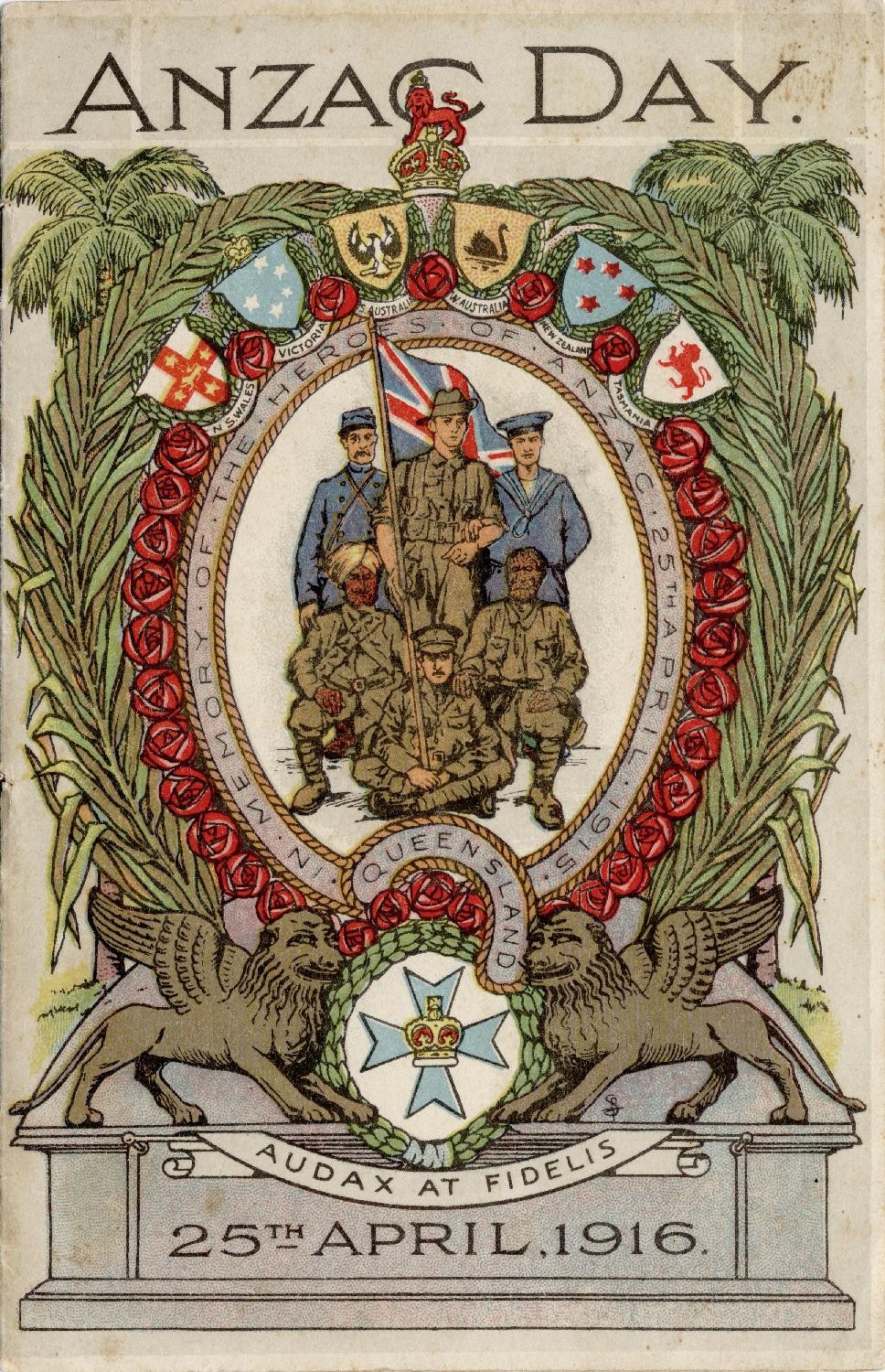
The Australian Imperial Force march through the city was also organised by the Commandant who presided over the “Firing Party” who fired “three volleys” after which the Last Post was sounded.
The minute book provides great insight into the evolution of Anzac Day to become our national day of remembrance.
Highlights
In 1917 fund raising efforts were mentioned, with the sale of badges and donations used for “the care of the Grave of Australian Soldiers in Foreign Lands”.
In 1918 songs Nearer, My God, to Thee and Abide With Me were recommend for Anzac public meetings throughout the state. Local Anzac committees were also encouraged to “take steps for the cessation of all business, engines, machines, newspaper presses, amusements, picture shows for one minute at 9pm sharp” and the Anzac Day executive applied to the Government for the “stoppage of all trains for one minute”.
In 1919 with “permanent peace … in sight” the Anzac Day executive hoped observances would be “even more marked” throughout the state.
In 1921 the Anzac Day Act was passed – formalising 25 April as an official public holiday and banning horse racing. Clubs that disobeyed the Act could be fined up to 50 pounds.
In 1922 Anzac Day continued to gain momentum. However the executive committee feared “the declaration of the public holiday might ... allow it to become an occasion of rejoicing, for which Armistice Day is more appropriate, instead of one of solemn commemoration for those who suffered and died in the great war”.
Today's mass consumption of Anzac biscuits and barbecued sausages may well have been frowned upon by the executive committees of yesteryear, but the poignant nationwide dawn services would have undoubtedly received a tick of approval.
See the QANZAC100 website for more information about the Anzac Day Commemoration Committee records, and the history behind our national day.
Dianne McKean
Learn more about State Library's other UNESCO Memory of the World collections:
Comments
Your email address will not be published.
We welcome relevant, respectful comments.